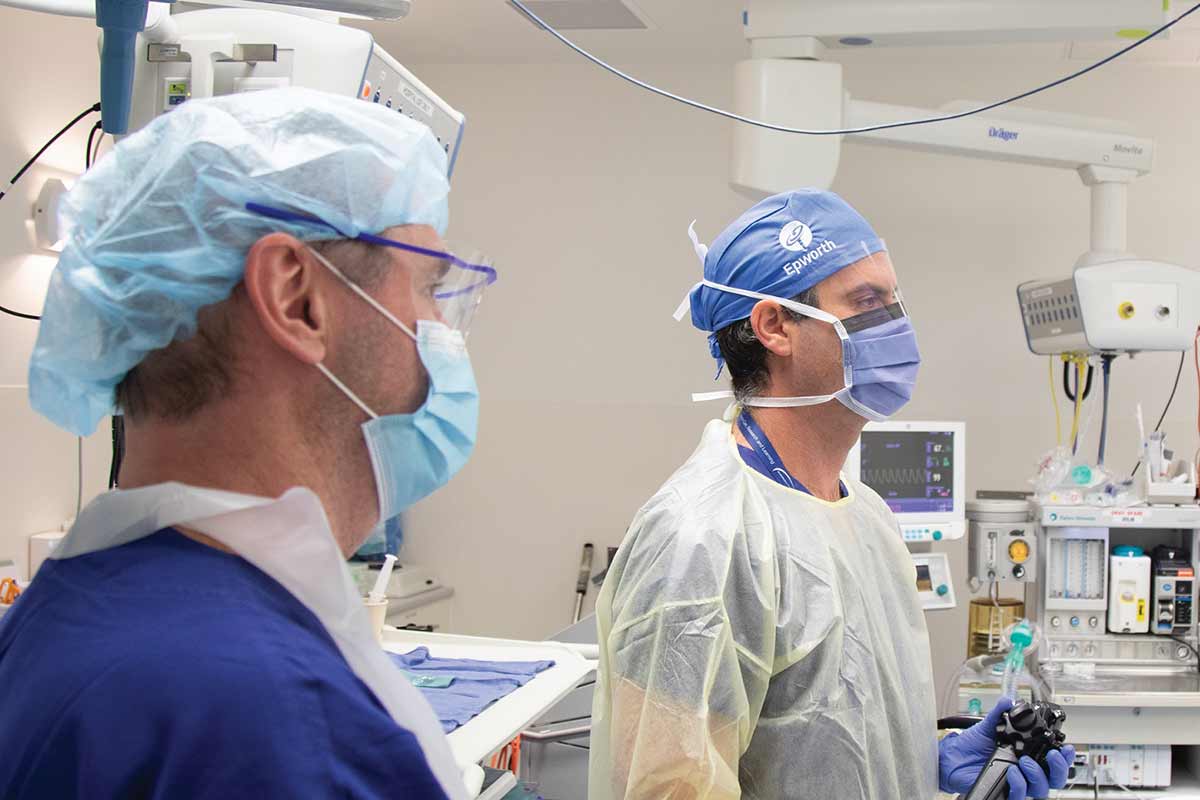عرض هذه الصفحة باللغة العربية
Surgery - Arabic
查看此页面的简体中文版本
Surgery - Mandarin
Xem trang này bằng tiếng Việt
Surgery - Vietnamese
Surgery for early pancreatic cancer
Getting a diagnosis in the early stages of pancreatic cancer, before the disease spreads to other parts of your body, means surgery to remove the cancer may be possible. Your doctor may recommend one of the following procedures:
Whipple procedure
A Whipple procedure (or pancreaticoduodenal resection) is the most common surgery to remove tumours in the head of the pancreas. The procedure involves removing:
- the head of the pancreas
- the first part of the small intestine (duodenum)
- the gall bladder
- part of the bile duct
- lymph nodes near the pancreas
- part of the stomach, if required
- the second part of the small intestine (jejunum).
After the procedure, your surgeon will reconnect the pancreas, bile duct and stomach to the small intestine. This allows digestion to function again after surgery.
Distal pancreatectomy
A distal pancreatectomy is a procedure to remove tumours in the tail and body of the pancreas. The procedure involves removing the tail, or the tail and part of the body of the pancreas. Your surgeon will generally remove your spleen as well.
Total pancreatectomy
If the tumour is large or multiple tumours exist within your pancreas, your surgeon may recommend a total pancreatectomy. This procedure involves removing your entire pancreas. Your surgeon will also remove your spleen, gallbladder, part of the stomach, small intestine, bile duct and the lymph nodes close to the pancreas.
Living without a pancreas means that your body can no longer produce insulin. Without insulin, your body can’t regulate your blood sugar levels. This means you will develop type 1 diabetes. Type 1 diabetes is a condition that will need to be managed for the rest of your life.
Watch: Surgery for pancreatic cancer | Patient education video
What to expect: Surgery for pancreatic cancer
Surgery for advanced pancreatic cancer
If the cancer has spread (metastasised), the removal of the tumour may not be possible. In this case, your specialist may suggest surgery to relieve symptoms related to blockages caused by the tumour. This will help to improve your quality of life.
Surgical options for advanced pancreatic cancer include:
Stenting
Cancer in the head of the pancreas can result in a blockage of the bile duct or small intestine. A surgeon can insert a stent(a small metal or plastic tube) to open up the bile duct or bowel to allow food to pass through. This will also relieve pressure caused by a tumour. A stent is usually put in during an ERCP (endoscopic retrograde cholangiopancreatography) procedure.
Bypass surgery
Another method to help with symptoms of a blocked bile duct is bypass surgery. This procedure involves re-directing the flow of bile from the common bile duct directly to the small intestine, bypassing the pancreas. Bypassing the blockage will allow your stomach to empty and stop a future blockage to the first part of the small intestine (duodenum).
Gastroenterostomy
This procedure involves surgically connecting your stomach to the second part of your small intestine (jejunum). This allows food to pass straight from the stomach to the middle section of your small intestine. This procedure bypasses the first section of the small intestine (duodenum) if damage exists.
Venting gastrostomy
This procedure involves connecting the stomach to an artificial opening on the abdomen to insert a thin tube. This tube allows fluids to drain out of your stomach, vent air and give medicines if needed. The procedure also helps relieve nausea and vomiting, which improves quality of life.
Before any surgery, your care team at Epworth will provide you with detailed information about the procedure. This will include information on:
- preparing for the procedure
- what the procedure involves
- what to expect after the operation
- discharge from hospital and recovery
- the possible side effects resulting from the operation.


